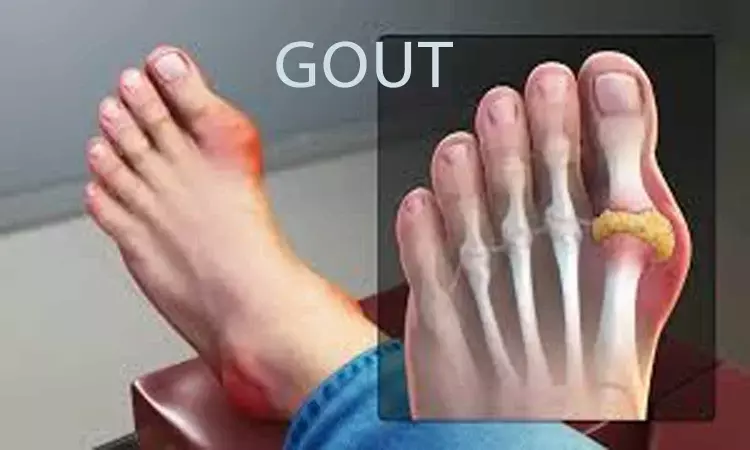- Home
- Medical news & Guidelines
- Anesthesiology
- Cardiology and CTVS
- Critical Care
- Dentistry
- Dermatology
- Diabetes and Endocrinology
- ENT
- Gastroenterology
- Medicine
- Nephrology
- Neurology
- Obstretics-Gynaecology
- Oncology
- Ophthalmology
- Orthopaedics
- Pediatrics-Neonatology
- Psychiatry
- Pulmonology
- Radiology
- Surgery
- Urology
- Laboratory Medicine
- Diet
- Nursing
- Paramedical
- Physiotherapy
- Health news
- Fact Check
- Bone Health Fact Check
- Brain Health Fact Check
- Cancer Related Fact Check
- Child Care Fact Check
- Dental and oral health fact check
- Diabetes and metabolic health fact check
- Diet and Nutrition Fact Check
- Eye and ENT Care Fact Check
- Fitness fact check
- Gut health fact check
- Heart health fact check
- Kidney health fact check
- Medical education fact check
- Men's health fact check
- Respiratory fact check
- Skin and hair care fact check
- Vaccine and Immunization fact check
- Women's health fact check
- AYUSH
- State News
- Andaman and Nicobar Islands
- Andhra Pradesh
- Arunachal Pradesh
- Assam
- Bihar
- Chandigarh
- Chattisgarh
- Dadra and Nagar Haveli
- Daman and Diu
- Delhi
- Goa
- Gujarat
- Haryana
- Himachal Pradesh
- Jammu & Kashmir
- Jharkhand
- Karnataka
- Kerala
- Ladakh
- Lakshadweep
- Madhya Pradesh
- Maharashtra
- Manipur
- Meghalaya
- Mizoram
- Nagaland
- Odisha
- Puducherry
- Punjab
- Rajasthan
- Sikkim
- Tamil Nadu
- Telangana
- Tripura
- Uttar Pradesh
- Uttrakhand
- West Bengal
- Medical Education
- Industry
Management of gout: American College of Rheumatology guideline

USA: The American College of Rheumatology has released 2020 guideline for the management of gout.
The guideline, published in the journal Arthritis & Rheumatology, is intended provide guidance for the management of gout, including indications for and optimal use of urate lowering therapy (ULT), treatment of gout flares, and lifestyle and other medication recommendations.
Recommendations
Indications for pharmacologic ULT
- Initiating ULT is strongly recommended for gout patients with any of the following: ≥1 subcutaneous tophi; evidence of radiographic damage (any modality) attributable to gout; OR frequent gout flares, with frequent being defined as ≥2 annually.
- Initiating ULT is conditionally recommended for patients who have previously experienced >1 flare but have infrequent flares.
- Initiating ULT is conditionally recommended against in patients with gout experiencing their first gout flare.
- Initiating ULT is conditionally recommended for patients with comorbid moderateto-severe CKD (stage ≥3), SU concentration >9 mg/ dl, or urolithiasis.
- Initiating ULT is conditionally recommended against in patients with asymptomatic hyperuricemia.
Recommendations for choice of initial ULT for patients with gout
- Treatment with allopurinol as the preferred first-line agent, over all other ULTs, is strongly recommended for all patients, including those with moderate-to-severe CKD (stage ≥3).
- The choice of either allopurinol or febuxostat over probenecid is strongly recommended for patients with moderate-to-severe CKD (stage ≥3).
- The choice of pegloticase as a first-line therapy is strongly recommended against.
- Starting treatment with low-dose allopurinol (≤100 mg/day and lower in patients with CKD [stage ≥3]) and febuxostat (≤40 mg/day) with subsequent dose titration over starting at a higher dose is strongly recommended.
- Starting treatment with low-dose probenecid (500 mg once to twice daily) with subsequent dose titration over starting at a higher dose is conditionally recommended.
- Administering concomitant antiinflammatory prophylaxis therapy (e.g., colchicine, nonsteroidal antiinflammatory drugs [NSAIDs], prednisone/ prednisolone) over no antiinflammatory prophylaxis therapy is strongly recommended.
- Continuing concomitant antiinflammatory prophylaxis therapy for 3–6 months is strongly recommended.
Timing of ULT initiation
- When the decision is made that ULT is indicated while the patient is experiencing a gout flare, starting ULT during the gout flare over starting ULT after the gout flare has resolved is conditionally recommended.
- A treat-to-target management strategy that includes ULT dose titration and subsequent dosing guided by serial SU measurements to achieve a target SU, over a fixed-dose ULT strategy, is strongly recommended for all patients receiving ULT.
- Achieving and maintaining an SU target of < 6mg/dl over the use of no target is strongly recommended for all patients receiving ULT.
- Delivery of an augmented protocol of ULT dose management by nonphysician providers to optimize the treat-to-target strategy that includes patient education, shared decision-making, and treat-to-target protocol is conditionally recommended for all patients receiving ULT.
Source : Arthritis & Rheumatology
Next Story


